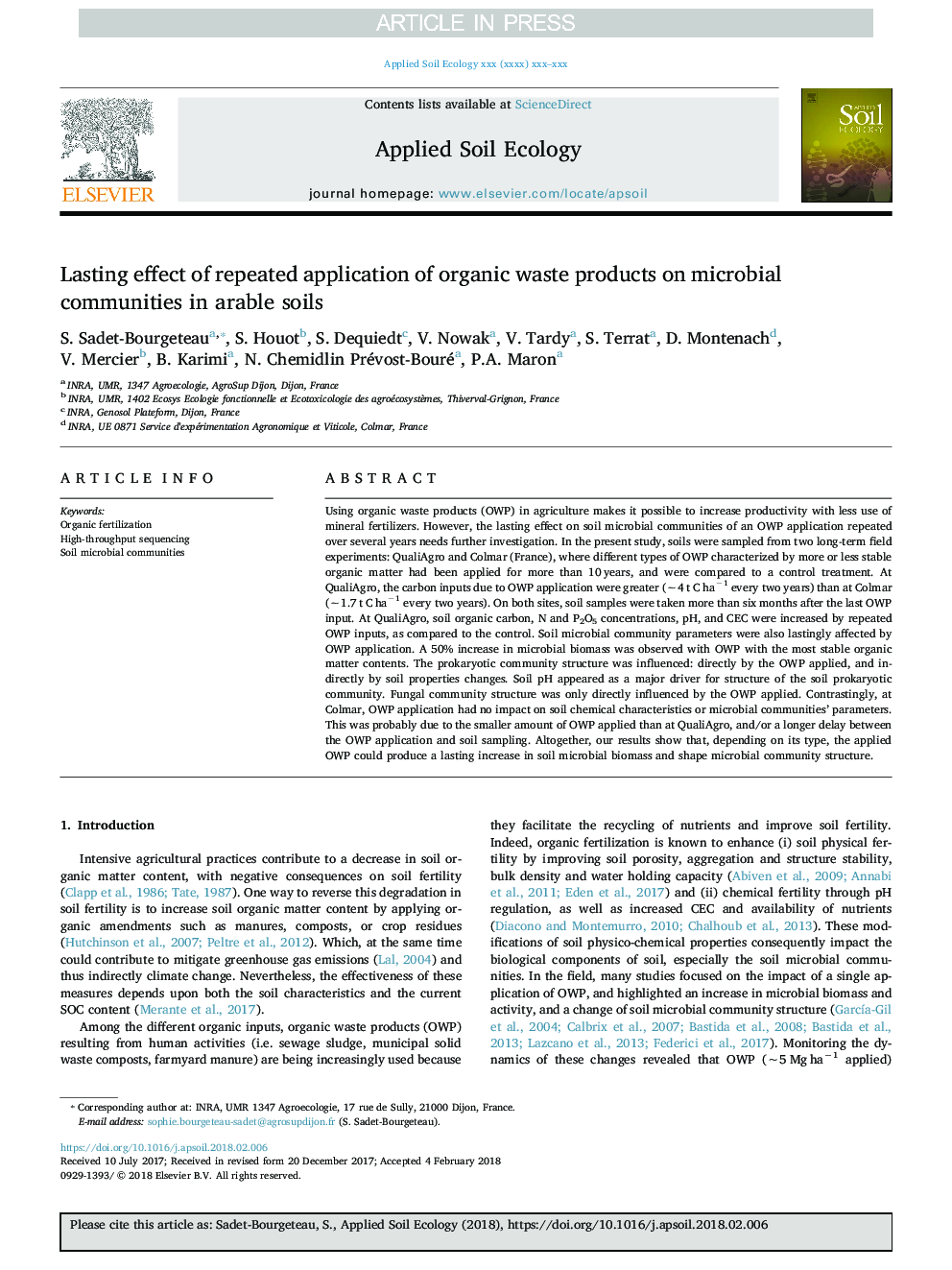| Article ID | Journal | Published Year | Pages | File Type |
|---|---|---|---|---|
| 8846740 | Applied Soil Ecology | 2018 | 10 Pages |
Abstract
Using organic waste products (OWP) in agriculture makes it possible to increase productivity with less use of mineral fertilizers. However, the lasting effect on soil microbial communities of an OWP application repeated over several years needs further investigation. In the present study, soils were sampled from two long-term field experiments: QualiAgro and Colmar (France), where different types of OWP characterized by more or less stable organic matter had been applied for more than 10â¯years, and were compared to a control treatment. At QualiAgro, the carbon inputs due to OWP application were greater (â¼4â¯tâ¯Câ¯haâ1 every two years) than at Colmar (â¼1.7â¯tâ¯Câ¯haâ1 every two years). On both sites, soil samples were taken more than six months after the last OWP input. At QualiAgro, soil organic carbon, N and P2O5 concentrations, pH, and CEC were increased by repeated OWP inputs, as compared to the control. Soil microbial community parameters were also lastingly affected by OWP application. A 50% increase in microbial biomass was observed with OWP with the most stable organic matter contents. The prokaryotic community structure was influenced: directly by the OWP applied, and indirectly by soil properties changes. Soil pH appeared as a major driver for structure of the soil prokaryotic community. Fungal community structure was only directly influenced by the OWP applied. Contrastingly, at Colmar, OWP application had no impact on soil chemical characteristics or microbial communities' parameters. This was probably due to the smaller amount of OWP applied than at QualiAgro, and/or a longer delay between the OWP application and soil sampling. Altogether, our results show that, depending on its type, the applied OWP could produce a lasting increase in soil microbial biomass and shape microbial community structure.
Related Topics
Life Sciences
Agricultural and Biological Sciences
Ecology, Evolution, Behavior and Systematics
Authors
S. Sadet-Bourgeteau, S. Houot, S. Dequiedt, V. Nowak, V. Tardy, S. Terrat, D. Montenach, V. Mercier, B. Karimi, N. Chemidlin Prévost-Bouré, P.A. Maron,
